
Lizards Around Las Vegas, Wildlife Around Las Vegas
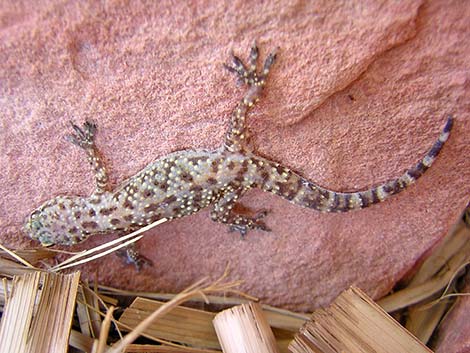 |
General Description: Mediterranean House Geckos (Hemidactylus turcicus), also called Turkish Geckos and just Mediterranean Geckos, are the common little lizard seen at night around homes and yards in the Las Vegas Valley. They are recognized by white tubercles (warts) on the back and the banded tail. Hatchlings, about 1-inch long, emerge in the fall. I've never heard it, but they are said to make squeaking or barking noises when disturbed by predators or other lizards invading their territory. Taxonomy: Gecko Family (Gekkonidae). Technical Description: Geckos are recognized by soft, pliable skin, fine scales, large eyes, and vertical pupils. This species is a small (total length: 10-13 cm [4-5 in.]) lizard with protruding eyes, elliptical pupils, no eyelids, and a banded tail. The dorsal coloration is pale pink or white and translucent with light and dark spots. The skin on the ventral surface is translucent, and some internal organs may be visible. Each toe has a large toe pad and a claw. The tail is banded. |
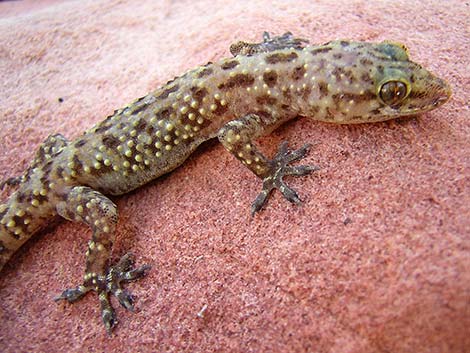 Note raised white tubercles (warts) |
Diet: Feeds around lights at night on arthropods, mainly insects and spiders. Habitat: Stucco and block walls, palm trees, and rocks in urban areas. Range: This species is native to the Mediterranean region, but they have been introduced across the southern and southwestern US. They are widely distributed around Las Vegas. Breeding: After mating, females lay eggs in soft ground, under leaf debris, or in a similar place, and they will hatch in the fall. I always look forward to finding tiny geckos in the yard in the fall. Comments: These little lizards give our cat countless hours of fun, although she rarely catches one. |
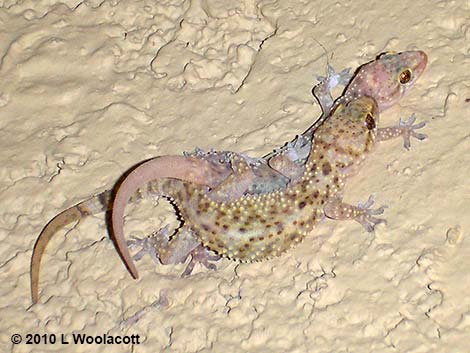 Mediterranean House Geckos mating |
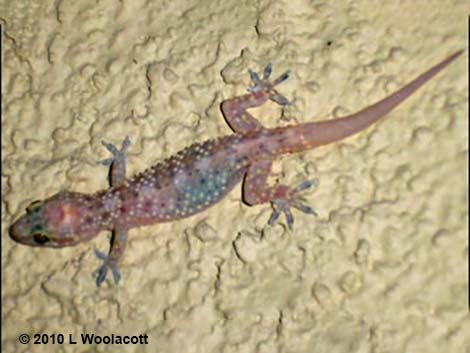 The female Mediterranean House Gecko after the mating event |
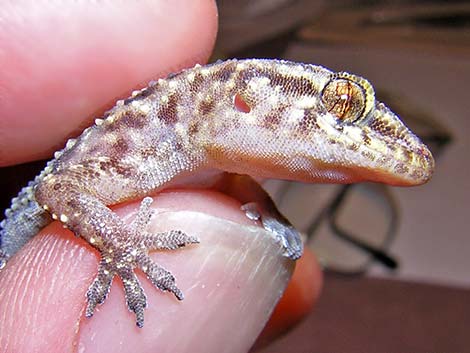 Note the vertical pupil |
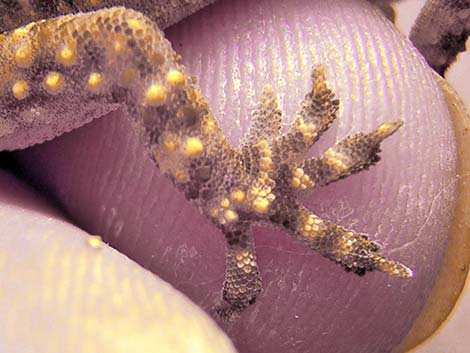 Note broad toe pads and claws |
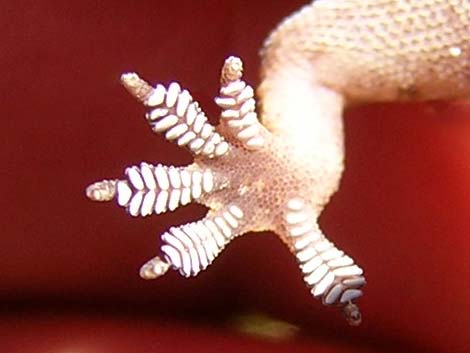 Magic gecko toe pads used to climb glass |
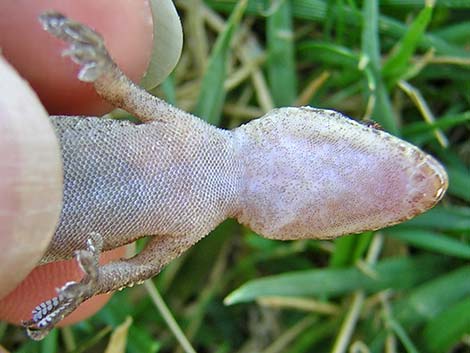 Pale belly |
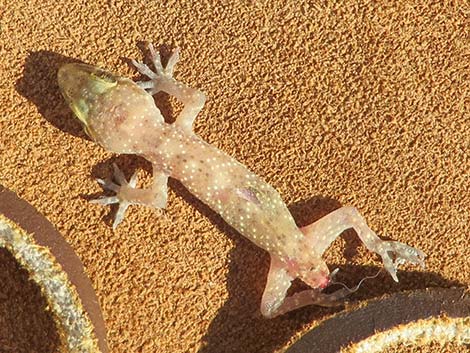 Tail-less hatchling brought in by cat |
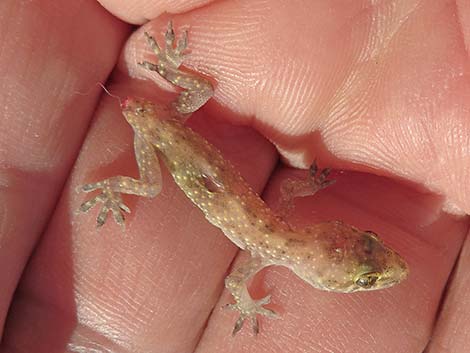 Tail-less hatchling brought in by cat |
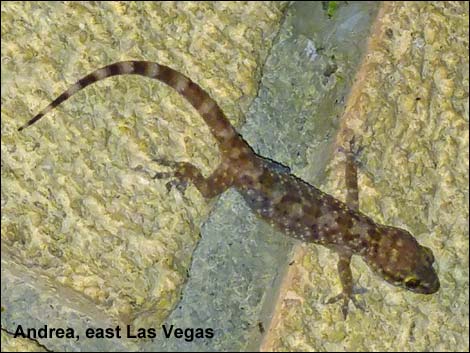 Photo courtesy of Andrea from east Las Vegas |
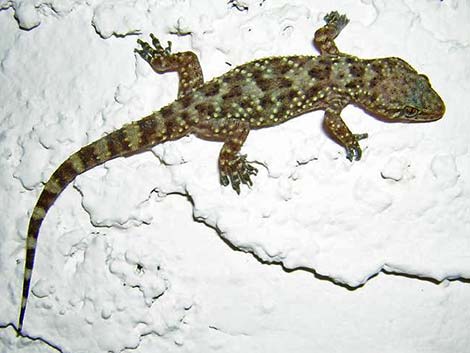 Typical habitat: stucco wall at night |
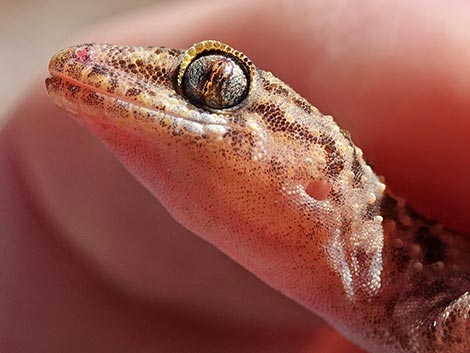 |
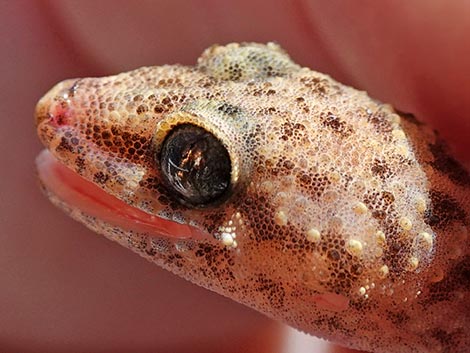 |
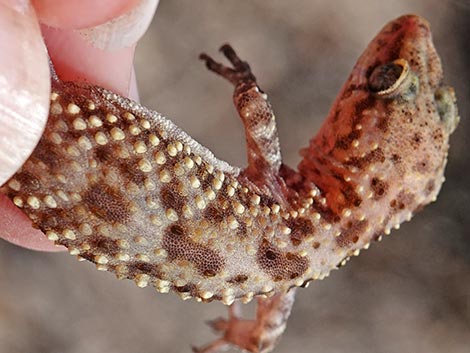 |
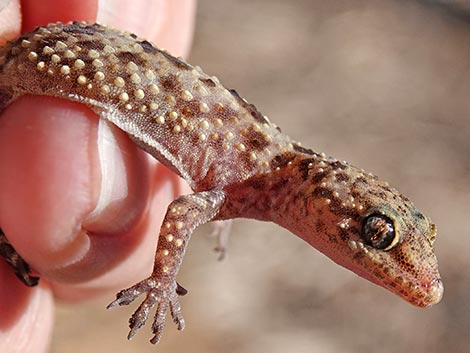 |
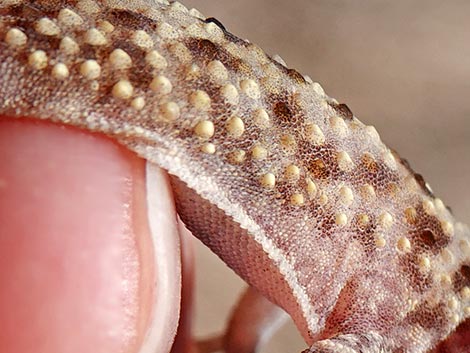 |
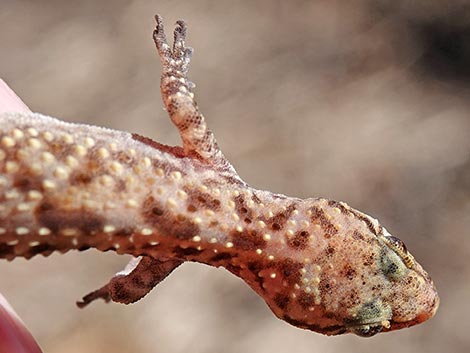 |
Note: All distances, elevations, and other facts are approximate.
![]() ; Last updated 250206
; Last updated 250206
| Lizards Around Las Vegas | Wildlife Around Las Vegas | Glossary | Copyright, Conditions, Disclaimer | Home |